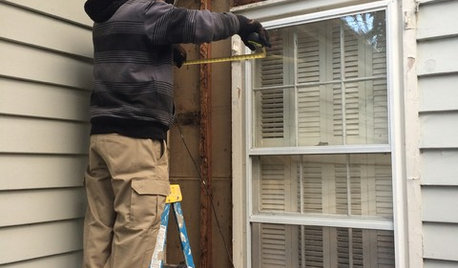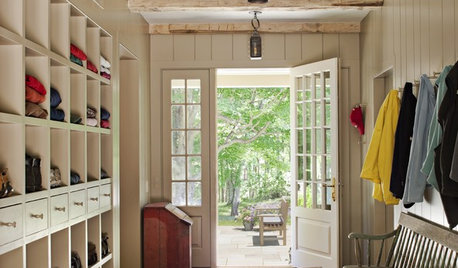'sigh'. oh, come on #2
Pallida
11 years ago
Related Stories

HOUZZ TVHouzz TV: First Comes Love, Then Comes a Wildly Colorful Mosaic Home
This couple spent two decades covering their home inside and out with brightly colored mosaic tile, vibrant paint, small toys and more
Full Story
TURQUOISERobin's Egg Blue — Oh, What a Hue!
Breathtaking in its brightness or as soft as a sigh, robin's egg blue will make any room in your home soar
Full Story
MODERN ARCHITECTUREHouzz TV: This Amazing Lake House Made a Couple’s Dream Come True
Step inside a dream home on Lake Austin, where architecture celebrating gorgeous views has a striking beauty of its own
Full Story
HOME TECHComing Soon: Turn Your Kitchen Counter Into a Touch Screen
Discover how touch projection technology might turn your tables and countertops into iPad-like devices — and sooner than you think
Full Story
MOST POPULAR15 Remodeling ‘Uh-Oh’ Moments to Learn From
The road to successful design is paved with disaster stories. What’s yours?
Full Story
WORKING WITH PROSBeyond the Warranty: Builders Respond to Those ‘Oh, No’ Calls
See how three building pros deal with real problems that come up after the warranty period ends
Full Story
FARMHOUSESNew This Week: 5 Farmhouse-Style Entryways We Want to Come Home To
Raw materials and a sense of calm make these farmhouse- and cottage-style foyers both practical and inviting
Full Story
MODERN HOMESHouzz Tour: A Midcentury Modern Dream Come True
A Toronto interior designer moves her family into a 1960s house she’d admired for years
Full Story
ECLECTIC HOMESHouzz Tour: A Toronto Home Comes Back From the Brink
Not even squatters deterred an interior designer from turning an abandoned 4-bedroom into a chic, unique home
Full Story
DECORATING GUIDES25 Design Trends Coming to Homes Near You in 2016
From black stainless steel appliances to outdoor fabrics used indoors, these design ideas will be gaining steam in the new year
Full StoryMore Discussions






Okiedawn OK Zone 7
PallidaOriginal Author
Related Professionals
Comstock Park Landscape Architects & Landscape Designers · Fort Lee Landscape Architects & Landscape Designers · Ilchester Landscape Architects & Landscape Designers · Roxbury Crossing Landscape Architects & Landscape Designers · Brookfield Landscape Contractors · Fort Worth Landscape Contractors · Las Vegas Landscape Contractors · New Providence Landscape Contractors · Red Oak Landscape Contractors · Secaucus Landscape Contractors · Seymour Landscape Contractors · South Hackensack Landscape Contractors · Crystal Lake Decks, Patios & Outdoor Enclosures · Lake Arrowhead Decks, Patios & Outdoor Enclosures · Eustis Decks, Patios & Outdoor EnclosuresOkiedawn OK Zone 7
slowpoke_gardener
luvncannin
PallidaOriginal Author
slowpoke_gardener
Okiedawn OK Zone 7
PallidaOriginal Author
shankins123
PallidaOriginal Author
Okiedawn OK Zone 7
p_mac
PallidaOriginal Author
shankins123
Okiedawn OK Zone 7
PallidaOriginal Author
Okiedawn OK Zone 7
PallidaOriginal Author
Okiedawn OK Zone 7
susanlynne48
PallidaOriginal Author
Okiedawn OK Zone 7
PallidaOriginal Author
Okiedawn OK Zone 7
PallidaOriginal Author
susanlynne48
Okiedawn OK Zone 7
Julie717